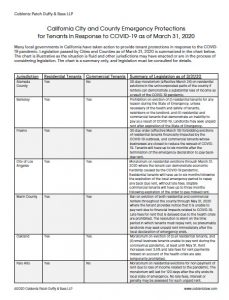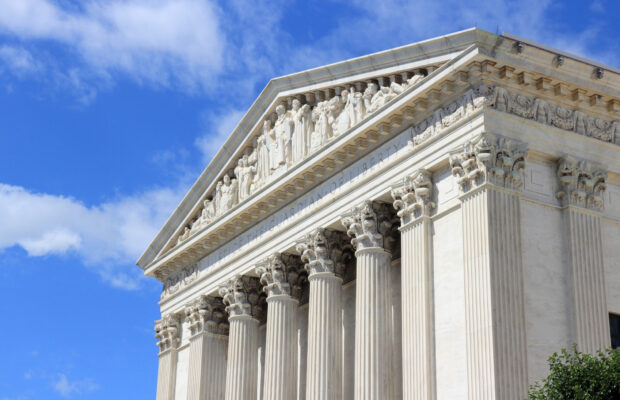As we previously reported, in the past two weeks, the federal government, the state of California, and many local governments have taken action to provide tenant and homeowner protections in response to the COVID-19 pandemic.
Federal Homeowner Protections
On March 18, President Trump announced a suspension of foreclosures and evictions by the Department of Housing and Urban Development through April 30. The moratorium will apply only to homeowners with mortgages insured by the Federal Housing Administration. Also on March 18, the Federal Housing Finance Agency directed Fannie Mae and Freddie Mac to suspend foreclosures and evictions for at least 60 days.
California Homeowner Protections
At the state level, on March 25, California Governor Gavin Newsom announced that Wells Fargo, US Bank, Citigroup, JP Morgan Chase, and almost 200 state-chartered banks and credit unions will provide mortgage relief to California property owners. Newsom announced during a news conference that they “have all agreed to 90 day waiver of payments for those that have been impacted by COVID-19.” The waivers will apply to single-family homes and properties with 1-4 units. Californians struggling with the COVID-19 crisis may be eligible for relief upon contacting their financial institution.
California State and Local Tenant Protections
On March 27, Governor Newsom issued Executive Order N-37-20 banning the enforcement of evictions statewide against qualified California residential tenants who fail to pay rent between the date of the Order and May 31, 2020. To qualify, residential tenants must give notice to the landlord of inability to pay all or part of their rent as a result of COVID-19 within seven days after the rent is due. The tenant would then have 60 days (instead of the statutory 5 days) to respond to an eviction lawsuit, and law enforcement would be prohibited from enforcing an eviction against such tenant while the Order is in effect. Tenants would remain obligated to repay full rent in a timely manner after the moratorium is lifted.
The March 27 Order builds on Governor Newsom’s prior Executive Order N-28-20, which authorizes local governments to pass their own stricter bans on residential or commercial evictions. The prior Order also makes it unlawful through May 31 to evict a residential tenant and subsequently rent or offer to rent to another person at a rental price greater than the evicted tenant could be charged.
Under the authority granted by Executive Order N-28-20, a number of local governments have passed broader eviction moratoriums, including moratoriums that aim to protect commercial tenants. The statewide eviction moratorium does not override stricter measures that local governments have already enacted or may enact going forward.
Locally, San Francisco Mayor London Breed issued a 30-day moratorium on residential and commercial evictions related to financial impacts caused by the COVID-19 pandemic that is more expansive than the statewide moratorium. Residential tenants will have up to six months after the end of the emergency declaration period to pay the total of their missed rent. The moratorium on commercial tenants is limited to small and medium-sized businesses (those with worldwide gross receipts in 2019 of $25 million or less). Landlords must provide such business tenants at least one month to cure a failure to pay rent. If the business tenant provides documentation of a financial difficulty related to COVID-19, the cure period is automatically extended for successive periods of one month, up to a total of six months. During the applicable cure period, landlords must negotiate a payment plan in good faith. Landlords may proceed with eviction after a tenant fails to pay all outstanding rent within the applicable cure period.
Legislation passed by other Cities and Counties in California is summarized in the chart to the left. The chart is a summary only, and legislation must be consulted for details. It is illustrative as the situation is fluid and other jurisdictions may have enacted, considered, or are in the process of considering legislation. In some cases the local restrictions are more stringent that the Governor’s Order, and in those cases the more restrictive local provisions apply. A common thread through the various jurisdictions is that tenants are not relieved of their duty to (eventually) pay rent. Click on the image to the left to view the full chart.
The situation and responses continue to evolve quickly, and other local jurisdictions are considering similar controls. The Governor’s Office may also provide further guidance on these issues. The Coblentz Real Estate team and authors of Unfamiliar Terrain will continue to monitor these developments.




